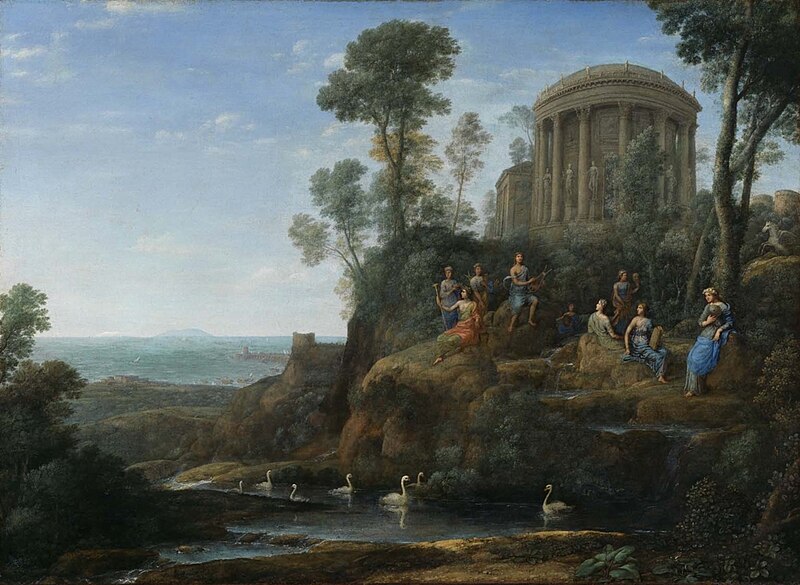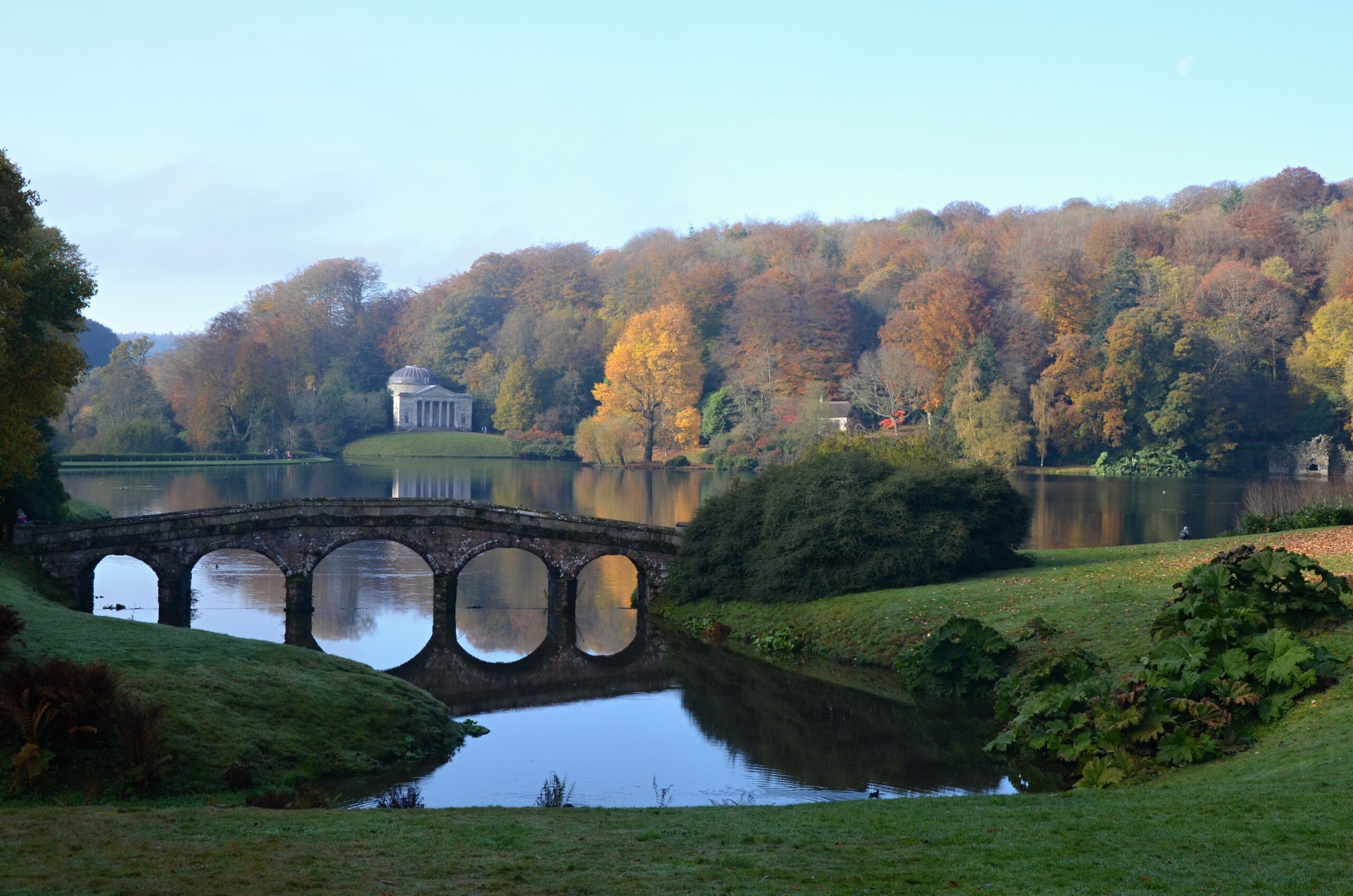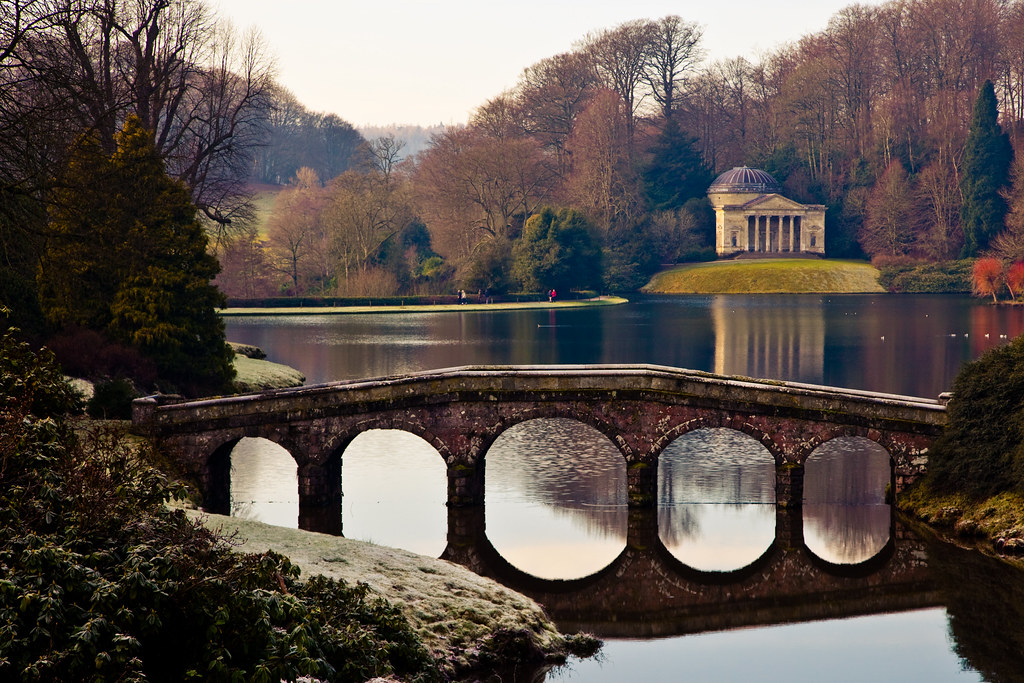In my Thursday post on Sense & Sensibility I said that Aryan beauty was flaunted in the temples and the streets of the Greco-Roman world. I forgot to mention that some Europeans in the post-Renaissance centuries also honoured Aryan beauty in non-commercial settings, as we see in this scene of beautiful sculptures of human nudes in the 2005 adaptation of Pride & Prejudice. Four years ago I wrote:
It is known that the wealthy Englishmen tried to bring the beautiful architecture of some paintings of Claude Lorrain (paintings that I contemplated during my last visit to London’s museums) to the countryside. The building that served as a refuge from the copious rain for the future couple, when Mr Darcy proposes to Elizabeth [clip here], is the perfect framework for the fourteen words.
Henry Hoare (1705-1785), banker and garden owner-designer, saw the paintings of Claude Lorrain (1600-1682) and was so enchanted by them that he commissioned architect Colen Campbell to design the garden we enjoyed in the film. Inside it we see the Temple of Apollo, where the scene where Mr Darcy proposes to Liza was filmed: a temple we see in more than one of Lorrain’s paintings.
Those who have visited Hoare’s garden have commented that, when you walk through Stourhead, you get the feeling that Jane Austen could walk out at any moment, or that you yourself could be portrayed in that bucolic painting you see around you. (I felt something similar a decade ago in Perth, Scotland, when I crossed a bridge and there was no one around me!)
These Stourhead gardens and temples are one of the places to visit when you are in the nearby Cotswolds. We must thank Lorrain, Hoare and his architect for being inspired by pagan architecture.
It is most unfortunate that, unlike the adolescent Adolf Hitler, those who now belong to the racial right fail to make deep inner contact with the architecture of the classical and Italian world that led the lad Hitler to activate, in his psyche, the archetype of our true Gods.


